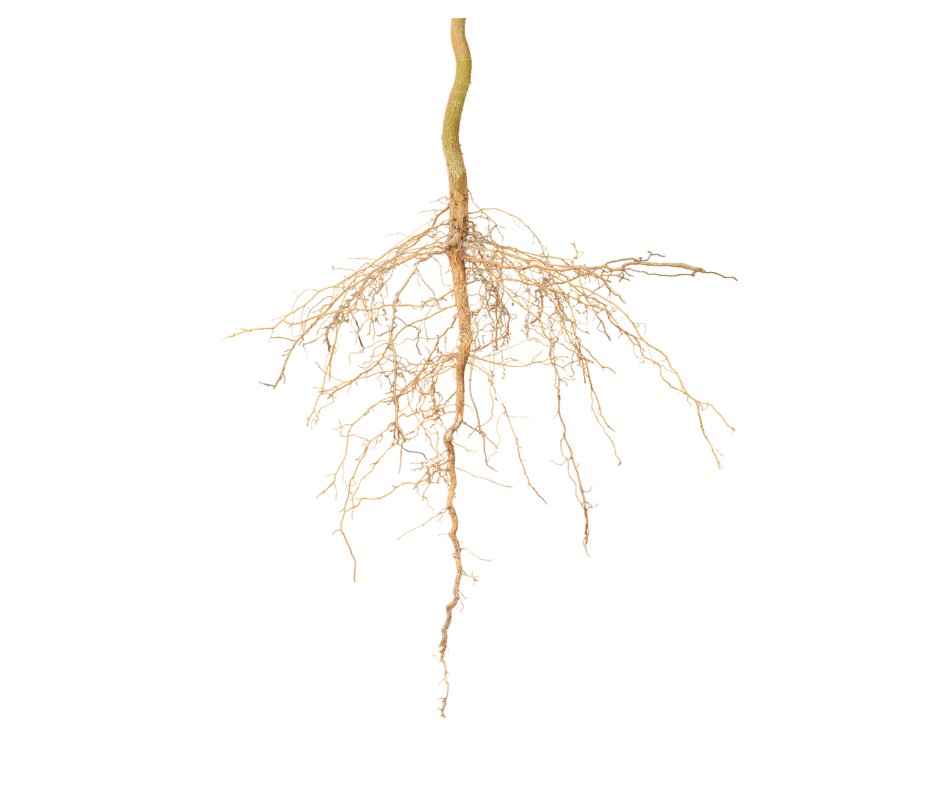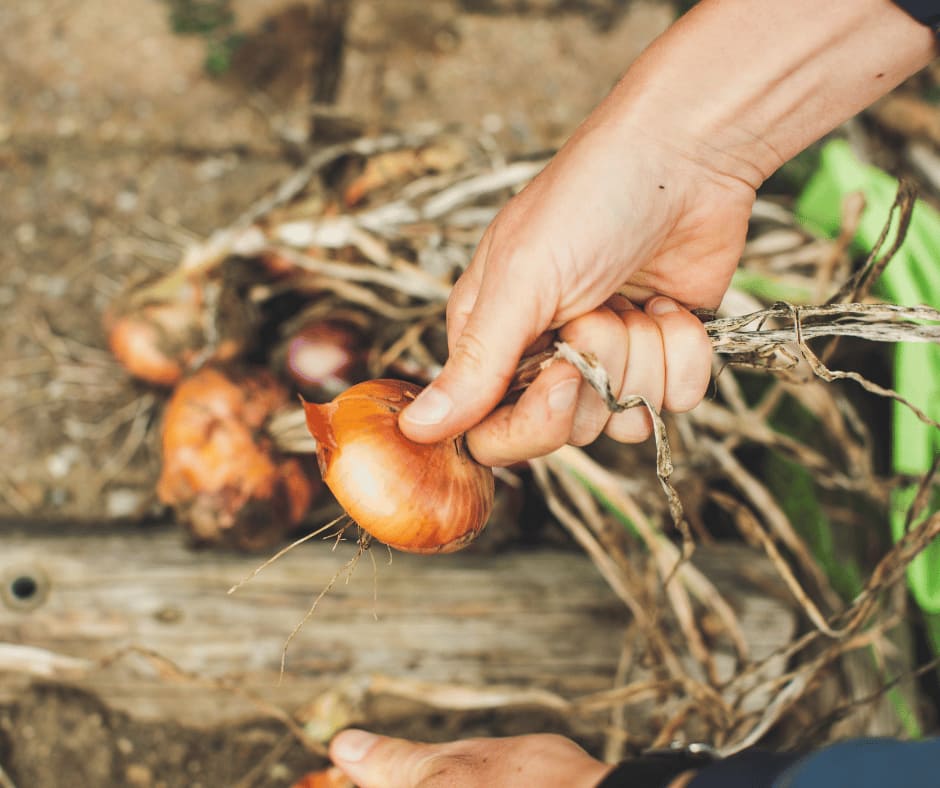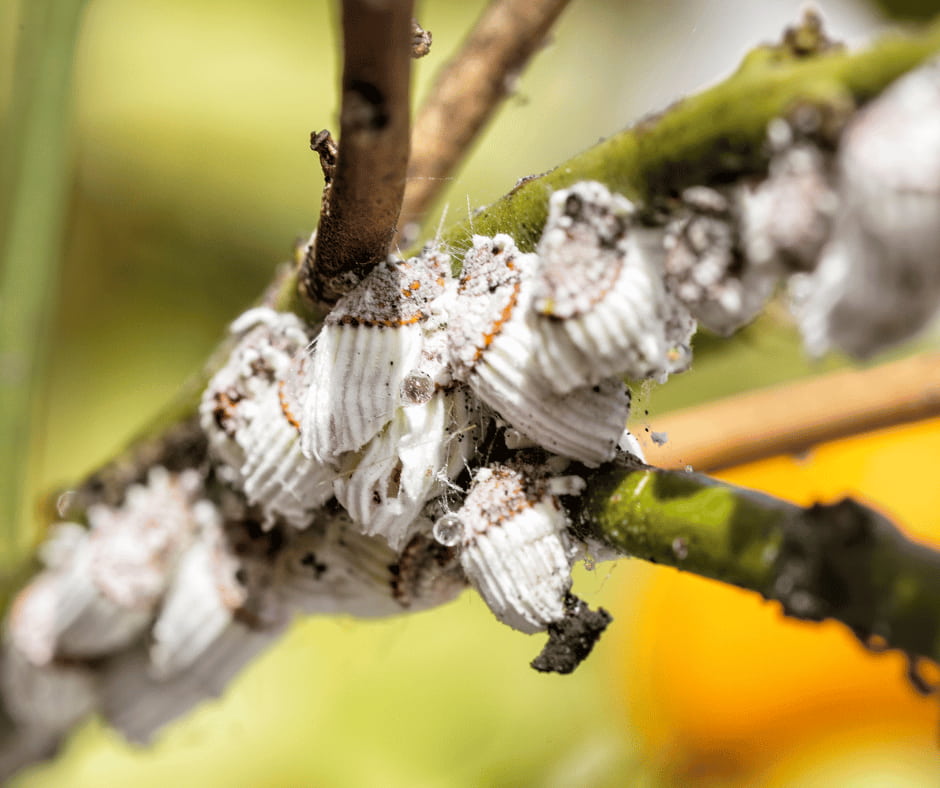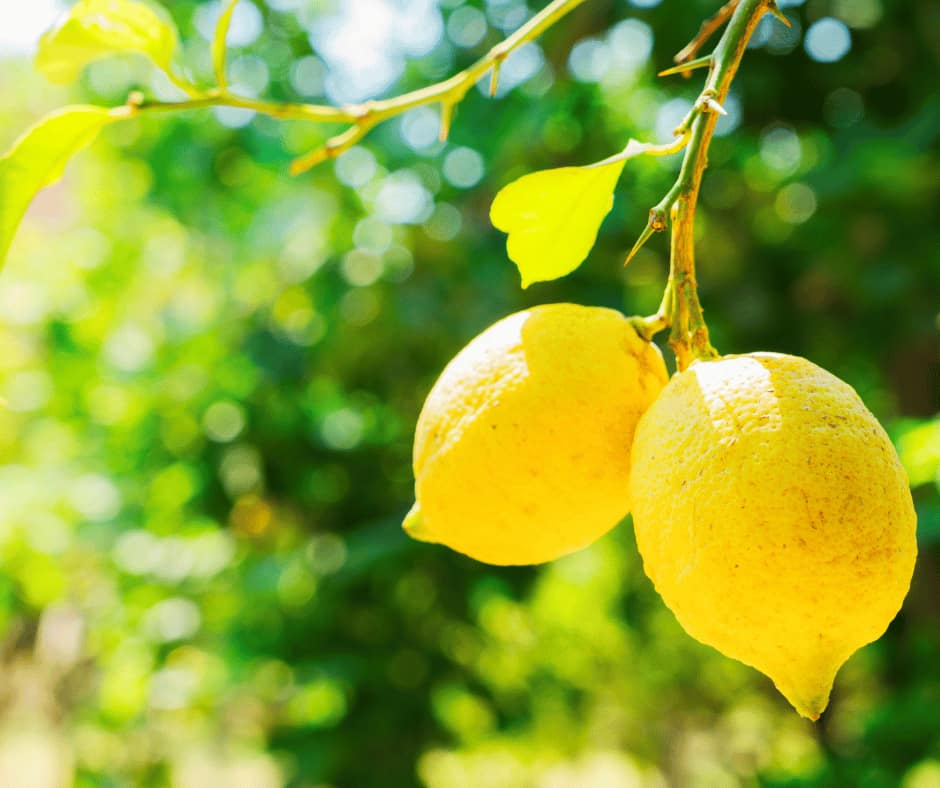In the vibrant gardening world, citrus trees stand out for their lush foliage and bountiful fruit. Thriving in well-drained soil and basking in full sun, these trees are a staple in many Australian gardens.
However, their success hinges on more than just care and climate; it’s also about the company they keep. Companion planting, the strategic placement of plants for mutual benefit, is crucial.
Selecting the right neighbours for your citrus trees can differentiate between a thriving orchard and a lacklustre harvest. It’s a dance of balance, ensuring each plant’s needs are met without hindering others.
Benefits of careful plant selection around citrus trees
Selecting the right companions for citrus trees is akin to crafting a harmonious ecosystem. When compatible plants are chosen, they collectively foster a thriving environment. This synergy can significantly enhance the growth and health of citrus trees.
For instance, certain plants attract beneficial pollinators, boosting fruit production through improved pollination. Others serve as natural pest deterrents, safeguarding citrus trees from harmful insects without the need for chemical pesticides.
Additionally, some companions contribute to nutrient balance in the soil, ensuring citrus trees receive the necessary nourishment. Conversely, incompatible plants can compete for resources, hinder growth, and attract pests, ultimately impacting the health and yield of your citrus trees.
Thus, careful plant selection is a matter of aesthetics and a crucial step in cultivating a productive and healthy citrus grove.

Plants to avoid near citrus trees
In the quest for a flourishing citrus grove, knowing what not to plant is as vital as knowing what to plant.
Here’s a rundown of plants to avoid planting near citrus trees:
- Plants with high moisture needs
- Deep-rooted plants
- Plants that require a lot of water
- Tall trees and large shrubs
- Root crops
- Plants that attract citrus pests
- Grasses growing close to the trunk
Understanding these dynamics is key to ensuring your citrus trees have the best conditions for growth, health, and abundant fruit production.
Let’s dive into more detail below!
1. Plants with high moisture needs
Plants with high moisture needs can inadvertently rival citrus trees in the garden. These thirsty plants often require frequent and abundant watering, which contrasts sharply with the moderate water needs of citrus trees.
When placed nearby, these moisture-loving plants can absorb a significant portion of the available water in the soil. This competition can lead to moisture stress in citrus trees as they struggle to obtain the water essential for their growth and fruit development.
Common examples of such plants include:
- Willows: Known for their voracious water consumption.
- Bamboos: Especially the running types, which can be quite thirsty.
- Water lilies: While beautiful, they are best suited for pond environments rather than near citrus trees.
- Hydrangeas: These popular shrubs require consistently moist soil.
- Ferns: Many varieties, especially those in tropical settings, demand a lot of water.
Planting these near citrus trees can create a competitive environment for water, potentially leading to suboptimal conditions for your citrus trees to thrive.
It’s crucial to balance the water needs of all plants in your garden to ensure each one receives the necessary amount for healthy growth.
2. Deep-rooted plants

Deep-rooted plants can pose a significant challenge to the well-being of citrus trees due to their extensive root systems. Citrus trees typically have shallow roots that spread widely near the soil surface.
When deep-rooted plants are nearby, their roots can grow downwards and outwards, potentially encroaching upon the root zone of citrus trees. This intrusion can disrupt the delicate balance of nutrients and water absorption, as the deeper roots can take up more than their fair share of these vital resources.
Moreover, the physical growth of these deep roots can physically interfere with the citrus roots, leading to damage or stunted growth. This can stress the citrus trees, making them more susceptible to disease and reducing their overall vigour and fruit production.
Common examples of deep-rooted plants include:
- Oak trees: Known for their extensive and deep root systems.
- Walnut trees: Besides deep roots, they also release chemicals that can harm nearby plants.
- Pine trees: Their root systems can extend deep into the soil.
When planning a garden with citrus trees, it’s advisable to avoid planting these deep-rooted varieties nearby. Instead, opt for plants with similar shallow rooting patterns to ensure a harmonious and stress-free environment for your citrus trees.
3. Plants that require a lot of water
In the delicate balance of a garden ecosystem, plants that require a lot of water can inadvertently become adversaries to citrus trees. These water-intensive plants demand frequent and copious watering, which can lead to competition for water resources in the soil.
Citrus trees, while needing regular watering, prefer well-drained conditions and do not thrive in constantly moist soil.
When placed near water-hungry plants, citrus trees may struggle to access the necessary water, leading to stress and potentially impacting their health and fruit yield. This competition can be particularly intense during dry periods or in areas with limited water availability.
Common examples of water-intensive plants include:
- Birch trees: Known for needing plenty of moisture to thrive.
- Impatiens: Popular flowering plants that require consistently moist soil.
- Hostas: Shade-loving perennials that need regular watering.
Planting these types of plants near citrus trees can create an environment where the citrus may not receive adequate water, leading to stress and reduced vigour.
It’s important to consider the water needs of all plants in your garden and plan accordingly to ensure each plant, including your citrus trees, receives the right amount of water for optimal growth.
4. Tall trees and large shrubs
Tall trees and large shrubs can inadvertently become obstacles to the well-being of citrus trees. One of the primary challenges they pose is the obstruction of sunlight.
Citrus trees thrive in full sun, requiring several hours of direct sunlight daily for optimal growth and fruit production.
When overshadowed by taller vegetation, citrus trees may struggle to receive adequate sunlight, leading to poor growth and reduced fruit yield.
Additionally, tall trees and large shrubs are often robust competitors for nutrients. Their extensive root systems can spread wide and deep, absorbing a significant share of the soil’s nutrients.
This competition can leave citrus trees with relatively shallow root systems at a disadvantage, potentially leading to nutrient deficiencies.
Common examples of tall trees and large shrubs to avoid planting near citrus trees include:
- Eucalyptus trees: Known for their height and dense foliage, they can create significant shade.
- Magnolia trees: While beautiful, their large size and dense foliage can overshadow smaller citrus trees.
When planning a garden with citrus trees, it’s important to consider the mature size of all plants and their potential impact on light and nutrient availability.
Ensuring citrus trees have their own space, free from the shade and competition of taller plants, is key to their health and productivity. Instead, opt for a low-maintenance hedge plant for the best results.
5. Root crops

Citrus trees have a shallow but extensive root system that spreads near the soil surface. When root crops are grown in close proximity, their own growth can intrude into this root zone.
Root crops grow by expanding downwards and outwards in the soil, seeking nutrients and water. This expansion can disrupt the delicate root network of citrus trees, leading to competition for essential resources.
The presence of these expanding roots can also physically disturb the citrus roots, potentially damaging them and affecting the tree’s ability to efficiently uptake water and nutrients. This competition and disturbance can stress the citrus trees, impacting their overall health, growth, and fruit production.
Common types of root crops to avoid planting near citrus trees include:
- Carrots: Their long tap roots can grow deep and interfere with citrus roots.
- Potatoes: They expand underground and can encroach on the citrus root zone.
- Beets: Known for their bulbous growth, beets can disrupt the soil structure around citrus roots.
- Turnips: These root vegetables can grow large and compete for space and nutrients.
- Radishes: Although smaller, their growth can still impact the shallow roots of citrus trees.
When planning a garden, it’s advisable to give citrus trees ample space, away from these and other root crops, to ensure they have unimpeded access to the soil’s resources for optimal growth and fruiting.
6. Plants that attract citrus pests

Certain plants can inadvertently attract pests harmful to citrus trees, leading to potential infestations and diseases. It’s crucial to be aware of these plants to maintain the health of your citrus grove.
Common pests of citrus trees include:
- Aphids: These small, sap-sucking insects can cause leaf curl and transmit diseases.
- Citrus leaf miners: Larvae that tunnel through leaves, affecting the tree’s ability to photosynthesise.
- Scale insects: They suck sap from the tree and excrete honeydew, leading to sooty mould.
- Mealybugs: These pests also excrete honeydew and can cause stunted growth and leaf drop.
Plants that can attract these pests include:
- Roses: Often attract aphids, which can then migrate to citrus trees.
- Gardenias: Known to attract mealybugs and scale insects.
- Ornamental grasses: Can be a haven for aphids and other pests.
- Fruiting plants like tomatoes Can attract aphids and other insects that may also target citrus.
- Certain herbs: Some herbs, like mint or fennel, can attract pests that also find citrus trees appealing.
By avoiding planting these near your citrus trees, you can reduce the risk of attracting pests that could harm your citrus. It’s about creating a garden environment that supports the health and productivity of your citrus trees while minimising the attraction of their common pests.
7. Grasses growing close to the trunk
Allowing grasses to grow close to the trunk of citrus trees can pose several risks to their health and development. Grasses, by their nature, are competitive plants. When they encroach upon the base of a citrus tree, they can cause a couple of significant issues.
Firstly, grasses compete fiercely for nutrients and water in the soil. Their dense root systems can absorb a substantial amount of the resources available in the soil, leaving less for the citrus tree. This competition can be particularly intense around the root zone near the trunk, where citrus trees absorb a significant portion of their required nutrients and water.
Secondly, grasses growing close to the trunk can lead to physical damage. Activities like mowing and trimming around the trunk can inadvertently wound the bark, vital for the tree’s nutrient transport. Such injuries can make the tree more susceptible to diseases and pest infestations.
Common types of grasses that can pose these risks include:
- Kentucky Bluegrass: Known for its dense growth, it can aggressively compete for resources.
- Bermuda grass: Its vigorous growth pattern can lead to encroachment around the tree base.
- Fescue varieties: While often used in lawns, they can create a competitive environment for water and nutrients.
- Ryegrass: Popular in many lawns, but can be a strong competitor when grown near tree trunks.
To mitigate these risks, it’s advisable to maintain a grass-free zone around the trunk of citrus trees. This can be achieved through mulching or using physical barriers, which also help retain soil moisture and provide a buffer against temperature extremes.
Ultimately, this practice protects the tree from physical damage and ensures it has unimpeded access to the necessary nutrients and water.
Recommended companion plants for citrus in Australia
In Australia, selecting the right companion plants for citrus trees can significantly enhance their health and growth. These companions can provide various benefits, from attracting beneficial insects to improving soil health.
Here’s a list of recommended companion plants:
- Marigolds: These vibrant flowers are excellent at repelling pests like nematodes and aphids, which can harm citrus trees. Their strong scent acts as a natural deterrent.
- Lavender: Known for its pleasant aroma, lavender attracts pollinators like bees and butterflies, essential for the pollination of citrus blooms.
- Basil: This herb repels flies and mosquitoes while attracting pollinators. It’s also believed to enhance the flavour of citrus fruit when planted nearby.
- Nasturtiums act as a trap crop for aphids, drawing them away from citrus trees. Additionally, their bright flowers attract beneficial insects.
- Dill: Attracts ladybugs and lacewings, natural predators of common citrus pests like aphids and mites.
- Borage: Known to deter worms and caterpillars, borage also attracts pollinators and can improve the soil’s overall health.
- Yarrow: This plant encourages beneficial insects and improves soil quality with its deep roots, which help bring up subsoil nutrients.
- Chives: Their pungent smell repels pests, and their flowers attract bees. Chives can also improve soil fertility.
- Tansy: This plant is known to repel several pests harmful to citrus trees, including ants and some beetles.
- Comfrey: Its deep roots bring nutrients from the soil, making them available to the citrus trees. Comfrey also attracts beneficial insects.
Incorporating these companion plants into your citrus orchard or garden can create a more balanced and healthy ecosystem. These plants support the growth and health of citrus trees and contribute to a more diverse and sustainable garden environment.
Companion planting for potted citrus trees

Companion planting for potted citrus trees requires careful consideration, especially regarding space and root competition.
In containers, space and resources are limited, making it crucial to choose companions compatible with these constraints.
- Choose small or shallow-rooted companions: Opt for plants with shallow root systems to avoid competition for space and nutrients. Herbs like thyme, basil, and parsley are excellent choices as they don’t have extensive root systems.
- Consider the watering needs: Select companion plants with watering requirements similar to your citrus tree. This ensures that neither the citrus tree nor its companions are over or under-watered. Mediterranean herbs, such as rosemary and lavender, often match the watering needs of citrus trees well.
- Select pest-deterrent plants: Incorporate plants that naturally deter pests common to citrus trees. Marigolds and chives can repel pests while being compact enough for container growing.
- Utilise vertical space: In a pot, space is at a premium. Consider planting vertically growing plants like small trellised peas or climbing flowers. You could even consider using an Airgarden as this maximises the use of space without overcrowding the citrus tree’s root zone.
- Avoid large or competitive plants: Steer clear of plants that grow large or have deep, competitive root systems. Vegetables like tomatoes or large flowers can quickly outcompete the citrus tree for nutrients and water.
- Regular pruning and maintenance: Keep companion plants well-pruned and maintained to prevent them from overshadowing or overwhelming the citrus tree.
- Consider pot size: Ensure it is large enough to accommodate the citrus tree and its companions. A cramped pot can lead to competition for resources and stunted growth.
By following these guidelines, you can successfully incorporate companion planting in potted citrus trees, enhancing their growth and health while maximising the limited space of container gardening.
Common mistakes in citrus tree companion planting
Companion planting with citrus trees can greatly benefit their growth and health. Still, it’s easy to fall into some common pitfalls. Awareness of these mistakes can help gardeners create a more harmonious and productive citrus garden.
- Overcrowding: One of the most common errors is planting companions too close to the citrus tree. This can lead to competition for light, water, and nutrients and impede air circulation, increasing the risk of fungal diseases.
- Improper plant selection: Choosing plants that have conflicting needs with citrus trees, such as those requiring significantly more water or those that attract citrus pests, can harm rather than help your citrus trees.
- Neglecting citrus tree needs: Citrus trees require full sun, well-drained soil, and specific nutrient balances. Companion plants should not alter these conditions negatively. For instance, planting high shade-providing plants can deprive citrus trees of sunlight.
- Ignoring root competition: Planting deep-rooted plants near citrus trees can disrupt the root system of the citrus, leading to poor growth and fruit production.
- Planting invasive species: Some plants can become invasive and take over the space, resources, and nutrients meant for the citrus tree. It’s crucial to choose non-invasive companions.
- Not considering pest attraction: While some plants can deter pests, others might attract pests harmful to citrus trees. Researching and understanding the pest-repelling or attracting qualities of companion plants is important.
- Failing to rotate companions: Repeatedly planting the same companions in the same spot can build up specific pests and diseases. Rotating plants can help prevent this issue.
- Overlooking seasonal changes: Some companion plants may be suitable during certain seasons but not others. It’s important to consider how changing seasons affect the needs and compatibility of companion plants with citrus trees.
By avoiding these common mistakes, gardeners can ensure that their citrus trees and their companion plants coexist in a mutually beneficial way, leading to a healthier and more productive garden.

Final thoughts
Successful citrus cultivation extends beyond tree care to include strategic companion planting. Key to this is choosing plants that complement rather than compete with citrus for resources.
Opt for companions like marigolds and basil, which aid in pest control and pollination, and avoid those with high water demands or deep roots. Avoiding overcrowding and improper plant selection is crucial.
Thoughtful companion planting ensures a harmonious, productive citrus garden, fostering a thriving plant community!
FAQs
Can you plant a lemon and orange tree next to each other?
Yes, you can plant lemon and orange trees next to each other. They have similar growing requirements and can thrive together, providing enough space for root and canopy growth.
Is it OK to put mulch around citrus trees?
Yes, it’s beneficial to put mulch around citrus trees. Mulch helps retain soil moisture, regulate temperature, and suppress weeds, but keep it a few inches away from the trunk to prevent rot.
Where is the best place to plant citrus trees?
The best place to plant citrus trees is in a location that receives full sun, at least 6-8 hours daily, and has well-draining soil. Protection from strong winds is also advantageous.
How does pruning affect citrus trees, and when is the best time to prune?
Pruning is crucial for maintaining the health and productivity of citrus trees. It helps remove dead or diseased branches, improves air circulation, and allows more sunlight to reach the tree’s interior. The best time to prune citrus trees is in late winter or early spring before the new growth starts. However, light pruning and removing dead wood can be done anytime.
Are there any specific soil recommendations for citrus trees?
Citrus trees thrive in well-draining, slightly acidic soil. Amendments like compost or well-rotted manure can improve soil structure and fertility. If the soil is too alkaline, applying sulphur can help lower the pH. Additionally, a balanced, slow-release citrus fertiliser can provide essential nutrients. It’s important to test the soil before making any amendments to understand its current condition and needs.






